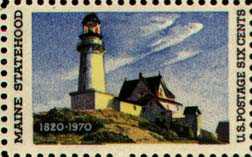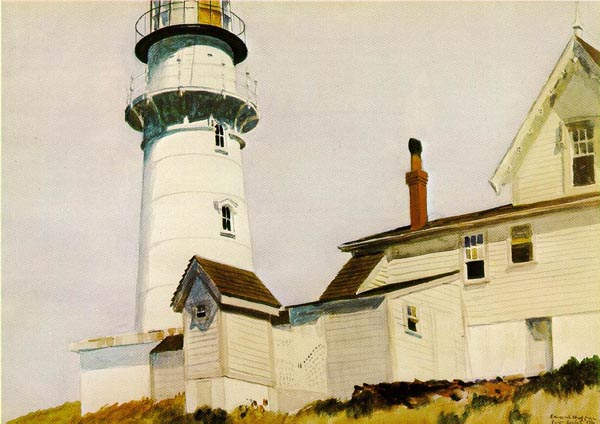LIGHT AT TWO LIGHTS
by Edward Hopper
1882-1967
![]()
Edward Hopper was born in Nyack, New York. His father owned a dry goods
store and he worked there when he was growing up.
He wanted to be an artist from the time he was young. His parents, fearing he
could not make a decent living with his painting, encouraged him to become a
commercial artist.
He studied at the New York School of Art for seven years. Then he worked as a
commercial artist for many years until he was nearly forty years old.
In 1924 he married Josephine Nivison. She, also an artist, was forty years old.
He was forty-two. Theirs was a stormy marriage. She felt that he did not support
her as an artist, and he thought she paid too much attention to her cat and not
enough attention to him. But they relied on each other, and she modeled for him.
In 1927 he and Jo bought a two-year-old Dodge car. It was just one more thing to
fight about. He was not a good driver, but he didn't want her to learn how to
drive. When she finally did get a driver's license, he didn't want her to
drive the car. They were not the most compatible couple.
Hopper made three trips to Paris in his lifetime, but his art reflects mainly
his life in America. He painted scenes of ordinary things you would see in the
city and the country; bus stations, office buildings, restaurants, lighthouses
etc. People in his paintings appear lonely and absorbed in their own thoughts.
In 1942 he painted Nighthawks. It was bought by the Art Institute of
Chicago and he at last became a recognized artist. In the following years he
received many awards and medals for his work.
He died in 1967 at the age of 85. Jo died just ten months later. They were
married 43 years.
 |
One of his lighthouse paintings was used on a postage stamp in 1970 to commemorate the 150th anniversary of Maine's statehood. You will enjoy reading the history of The Two Lights of Cape Elizabeth. |

